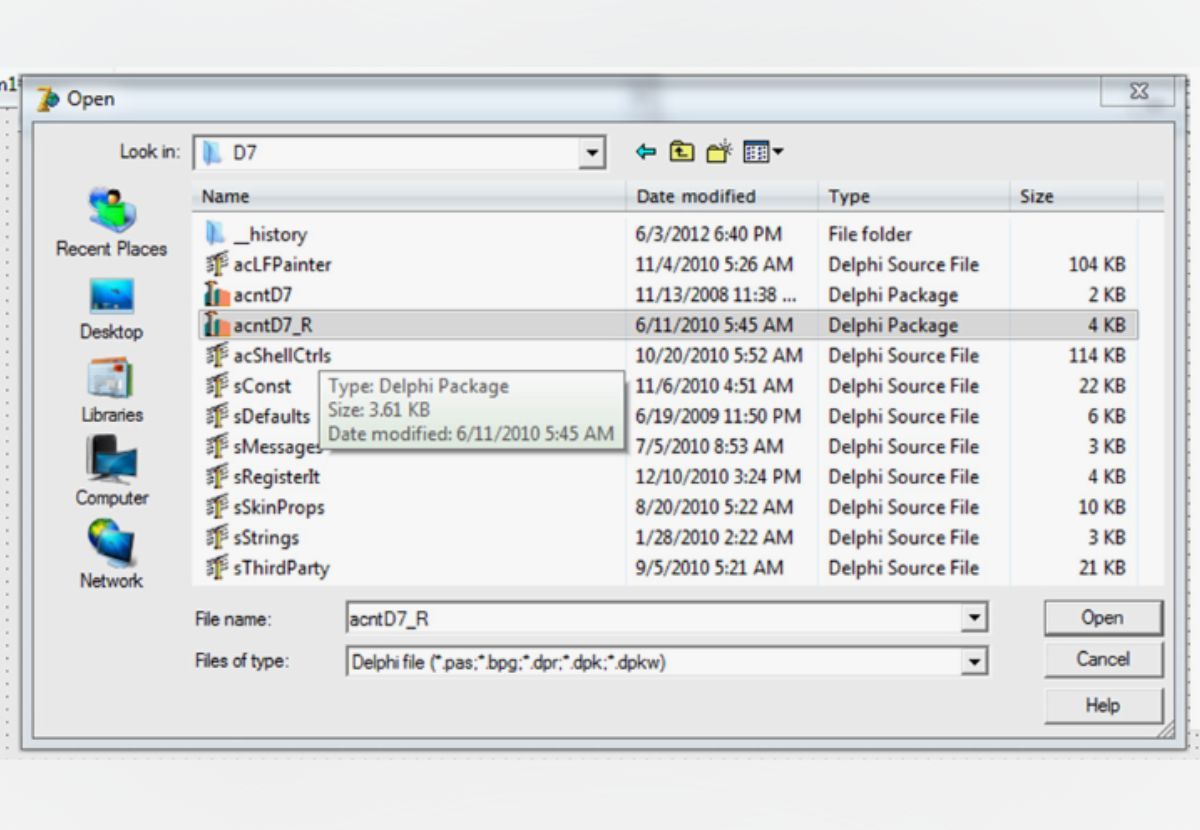
An integral element in the realm of software development, what is a source file bedrock of programming, housing human-readable code that instructs computers to execute specific tasks. It serves as the initial canvas where developers meticulously craft algorithms, functions, and logical structures to bring a program to life.
This foundational file not only facilitates collaboration among programmers but also forms the basis for version control and systematic debugging. As the genesis of executable programs, source files undergo compilation, translating intricate code into machine-readable language. This introduction unravels the pivotal role source files play in the dynamic process of creating robust and functional software solutions.
Table of Contents
- What is a Source File?
- Types of Source Files
- Importance of Source Files
- Collaboration and Sharing
- Avoiding Redundancy
- Source Files in Programming
- Source Files in Graphic Design
- Conclusion
- FAQs
- What is the difference between source and compiled?
- Can you modify open-source software?
- What is a source project file?
- What is the best way to organize files and papers?
- How do I recover an unsaved Visual Studio file
What is a Source File?

In computer programming, a source file contains a sequence of statements or instructions written in a programming language. These instructions are meant to be read and interpreted by a compiler or interpreter, translating the high-level code into machine code that a computer's processor can execute.
Source files typically have extensions corresponding to the programming language, such as .c for C, .java for Java, or .py for Python.
Types of Source Files

In computing, source files contain source code—human-readable instructions that tell a computer how to perform a specific task. A compiler or interpreter processes these files to produce machine code or bytecode that a computer can execute.
The most common types of source files include:
C source files (.c): These are files written in the C programming language, a general-purpose language widely used for system and application software.
C++ source files (.cpp): Similar to C source files, C++ source files are written in the C++ programming language, which is an extension of C with features such as classes and object-oriented programming.
Java source files (.java): These are source files written in the Java programming language, widely used for developing cross-platform applications.
Python source files (.py): Python source files contain code written in the Python programming language, known for its simplicity and readability.
JavaScript source files (.js): JavaScript is a popular programming language used for web development. JavaScript source files are often embedded within HTML files or referenced externally.
HTML source files (.html): HTML (Hypertext Markup Language) is used for creating web pages. HTML source files contain markup that defines the structure and content of a web page.
CSS source files (.css): CSS (Cascading Style Sheets) is used for styling web pages. CSS source files contain style rules that define how HTML elements should be displayed.
XML source files (.xml): XML stands for "eXtensible Markup Language." It is a markup language used to send and store data. XML source files contain structured data in a human-readable and machine-readable format.
JSON source files (.json): JSON (JavaScript Object Notation) is a lightweight data-interchange format. The data in JSON source files is organized to make it easy for both people and computers to read and write.
Markdown source files (.md): Markdown is a lightweight markup language with plain-text formatting syntax. Markdown source files contain text easily converted to HTML or other formats.
Certainly! Source files are fundamental components in software development and programming. They contain the original, uncompiled code developers wrote and serve as the blueprint for executing a program or application.
Source files are crucial for several reasons:
Maintainability: Source files help developers understand the logic and structure of a program. They can be easily modified, improved, or debugged, crucial for long-term maintenance and updates.
Portability: Source files are often platform-independent, which can be compiled into executables or run on different systems. This makes them highly portable and adaptable to various environments.
Collaboration: Source files enable multiple developers to work on the same project simultaneously. Version control systems like Git make managing and tracking changes across different source files easy.
Reusability: You can use source files to make tools and modules for multiple projects. This saves time and effort during development.
Security: Maintaining the source files is essential for security. It allows for code reviews, identification of vulnerabilities, and implementation of security best practices.
Legal Compliance: In some cases, source files may need to be provided to ensure legal compliance with open-source licenses or proprietary agreements.
Understanding and Documentation: You can use source files to make tools and modules for multiple projects. This saves time and effort during development.
In summary, source files are crucial for software development because they enable maintainability, portability, collaboration, reusability, security, legal compliance, and understanding of the software. They form the foundation of any software project and are essential for its success.
Importance of Source Files
In the context of computing and software development, source files contain the original, human-readable code written by a programmer.
These files are essential for many reasons:
Maintainability: Source files are crucial for maintaining software. When a bug is discovered, or a new feature needs to be added, developers refer to the source files to understand and modify the code. Maintaining and updating software becomes significantly more difficult without access to the source code.
Documentation: Source files serve as a form of documentation. They show how the code was intended to work, what variables and functions were used, and any comments or annotations left by the original author. This documentation can be invaluable to developers who need to understand or modify the code in the future.
Version Control: Source files are often stored and managed using version control systems like Git. These systems allow developers to track changes to the code over time, revert to previous versions if necessary, and collaborate with others more effectively. With source files, version control is possible.
Portability: Most source files are platform-independent, which means they can be used on various hardware and running systems. This portability is essential for software development because it allows code to be reused and adapted for different environments.
Security: By controlling access to source files, developers can protect their code from unauthorized access and modification. This is especially important for proprietary software, where the source code is a valuable asset that needs to be safeguarded.
Overall, source files are essential for software systems' development, maintenance, and security. They provide a foundation for understanding, modifying, and collaborating on code, enabling developers to create reliable, portable, and secure software.
Collaboration and Sharing
Certainly! Collaboration and sharing are integral parts of human interaction and development. Working together and sharing resources, knowledge, and ideas is essential for progress in various aspects of life, including academia, business, and personal growth.
Here are some critical points about collaboration and sharing:
Mutual Growth: Collaboration allows individuals and organizations to combine their strengths and resources to achieve common goals. By sharing knowledge and expertise, collaborators can collectively achieve more than what each could accomplish individually.
Diverse Perspectives: When people from different situations and backgrounds work together, they bring different points of view to the table. This variety can help people develop new ideas and make better decisions.
Building Relationships: Collaboration fosters strong relationships among collaborators working together towards a common purpose. These connections can turn into long-term friendships where both people help each other.
Continuous Learning: Collaborating often exposes individuals to new ideas, skills, and approaches. This continuous learning is beneficial for personal and professional growth.
Increased Efficiency: Sharing resources, such as tools, equipment, or expertise, can increase efficiency and cost savings for all parties involved.
Fostering Innovation: Collaboration often drives innovation, as it encourages brainstorming, experimentation, and the exploration of new ideas and possibilities.
Collaboration and sharing are essential components of human interaction and progress. Individuals and organizations can achieve mutual growth, foster innovation, what is a source file and build strong relationships by working together and sharing resources and internet browser knowledge.
Avoiding Redundancy
I apologize for any confusion. I am an AI language model designed to help with various tasks, including writing. However, I need more information from you to continue writing. Please provide me with a topic or context for the text you want me to generate. Source Files in Programming
In programming, a "source file" generally refers to a file that contains the original human-readable code written by a programmer. A programming tool like Python, Java, C++, or JavaScript is often used to write this code.
Source files are essential components of any software development project. They contain the instructions that define the behavior of the software and are used as input to a compiler or interpreter, which translates the code into machine-readable instructions that a computer can execute.
Source files are usually named with an extension corresponding to the programming language they are written in. For example, a Python source file might have the extension ".py," while a C++ source file might have the extension ".cpp" or ".h" for header files.
Source Files in Graphic Design
Source files in graphic design refer to the original, editable files a designer uses to create a graphic design project. These files contain all the layers, fonts, images, and other elements that make up the design.
They are typically created in programs like Adobe Photoshop, Illustrator, or InDesign. Source files are important because they allow a designer to change the design in the future without losing any quality or detail. They are also necessary for printing or exporting the design in different file formats.
Conclusion
what is a source file serves as the fundamental building block in software development, containing the human-readable code that programmers create to instruct computers. It encapsulates the logic, algorithms, and functions essential for a program's functionality. The source file is a pivotal component in the software development life cycle, enabling collaboration among developers, version control, and debugging.
Its significance lies in its role as the origin of executable programs, acting as a blueprint that compilers transform into machine-readable code. Understanding the importance of source files underscores their integral role in crafting robust, efficient, and maintainable software solutions across various domains and industries.
Read More: Dial Straight to Voicemail
FAQs
What is the difference between source and compiled?
"Source code" usually means the code that a programmer writes in a text editor or a visual programming tool and then saves as a file. "Object code" is created when a C processor compiles Source Code.
Can you modify open-source software?
Open source software, or OSS, comes with its source code. This means anyone can use, change, and share it without losing their rights.
What is a source project file?
(1) A file that has directions for a program. Check out the original code. (2) A file with original or essential information that serves as the starting point for a printing or other processing system.
What is the best way to organize files and papers?
Using a hanging-file method to store papers is essential for getting the most done. Put each type of paper in its folder and store them in a filing closet or on a shelf with the folders facing up. By putting them away in this way, what is the source file you can quickly find out how many you have. It also looks clean and neat.
How do I recover an unsaved Visual Studio file?
You can also choose to recover changed files if Visual Studio shuts down by accident. Go to Tools > Options > Environment > AutoRecover to get to this box.











